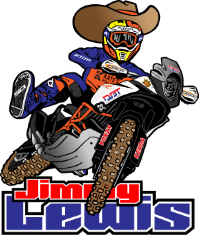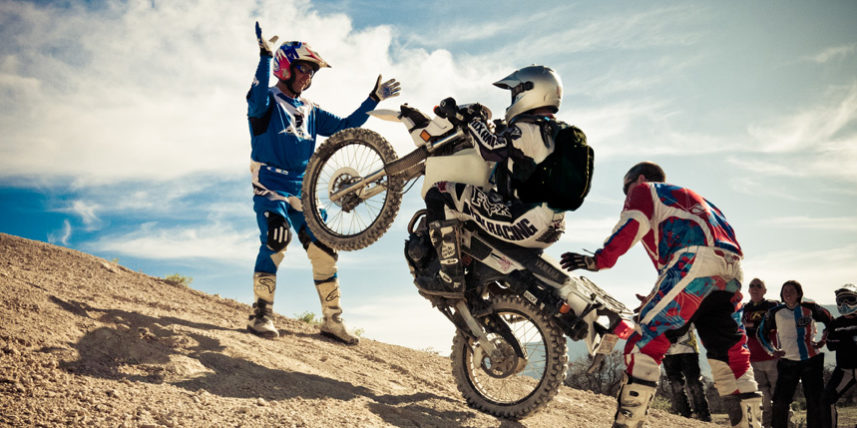Riding Tip: The Delicate Balance Of Balance.
We stress the two things that determine how proficient and comfortable you will be when riding: Balance and Traction. Balance is pretty natural, though very tough for some to grasp when standing on the motorcycle’s pegs. Traction, or the feeling for it, seems to vary widely between riders of different ability levels. And it is one of the most overlooked aspects that is limits what you can do on an off-road bike.
Simply put, the less traction you have, the less you can expect from the bike. Weather it is traction on an uphill as it gets steep or traction on the brakes when going downhill, having a feel for that traction is very important. Knowing if your bike is going to stick or slide on an off-camber trail can be the difference between being flopped over in a ditch or riding away happy and confident. There is a lot of physics that plays out in traction that most of us can’t explain, but from a rider’s perspective there are some simple rules that make a world of difference.
First, be light on the bike when needed, be heavy when needed. You want to be heavy on the bike when there is traction and as light as possible when traction goes away. You can’t change how much mass you have but you can control how you use that mass in relation to traction. There are times when a little speed or momentum will get you through a situation. Most riders screw this up by “gassing it” either, when they don’t have enough traction or when they have traction and are out of balance. The end result usually ends with the rider being out of control. Being balanced, pointed in the right direction, not having the bike wound up (wheels out of line or your body out of balance) will allow you to get that traction and burst of speed so you can “float” or be light at the spot the traction is limited.
Next is knowing your bike and being able to feel the traction. We have drills that give riders a chance to feel and sneak up on the loss of traction sensation without getting out of control. In doing this a rider needs to learn about the torque of the bike and the proper gear selection for the traction available. For instance, riding the same speed in 2nd and 3rd gear, there is a big difference in the power that is going to the rear wheel. For example there is much more power in 2nd gear, because the bike will be at a higher RPM. Sometimes this extra power is needed, sometimes it promotes wheelspin, which can help or hurt depending on the situation. Hence the term, “ride it a gear high” comes into play. And did you ever consider how much “mass” your bike gains when the engine is spinning at the higher RPM? It can make it more stable and even help with traction sometimes…Other times it hurts. Very high-level stuff, but that is why we study it so much and practice it even more.
The basic things like tire selection, tire pressure, suspension settings and bike balance all factor into the equation. Most of the time these answers are simple and standard with specifics to different bike types. Why so many “experts” rely on teaching these as the solution confuses us. These things are just a part of the answer.
Sure there is an element of terrain reading that helps in identifying available traction. This comes with experience and these reactions come with time eventually becoming instinctive.
A good example of how to understand traction is comparing off-road riding to on-road riding. Off-road riding differs so much from on-road due to the issue of traction. You expect 100% when on pavement and for dirt it is constantly varying. This is why off-road is perceived as being so much more difficult. The key to learning about traction is understanding that you can control the traction. This will give you a much better foundation to work from. A quick youtube search and you will be able to find examples of the best extreme enduro riders in the world. Pay attention and notice one very clear thing. They all are riding under control and aware of their traction at all times. The obvious difference between the best and the rest revolves heavily on the top riders spinning a LOT LESS. Because they understand and use traction.







